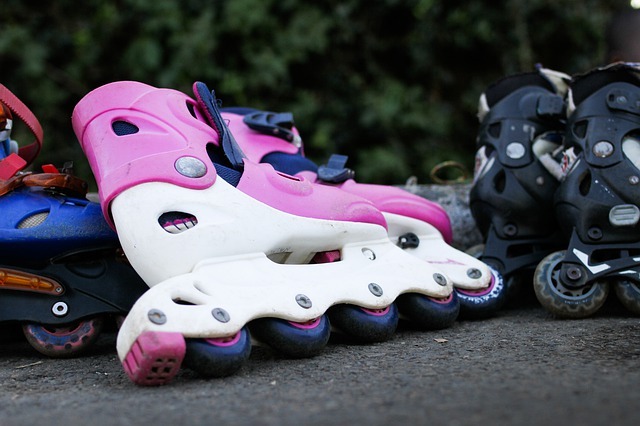
Inline skates are a type of roller skate with four or five wheels arranged in a single line and used for inline skating. The first commercially available inline skate was released by Rollerblades in 1987 and inline skating has since become a popular recreational activity. In fact, inline skates have been incorporated in various sports including inline speed skating, inline hockey and inline figure skating to name a few.
An inline skate is composed of basic parts, namely, boot, frame, bearings, wheels, and brakes. The boot is worn on the foot like a regular boot, fastened by laces or velcro straps or combination of both. It is usually heavily padded for protection and comfort making it bulkier than the regular boot.
The frame, usually made from plastic, carbon fiber or aluminum, is attached under the booth and holds the wheels in place. Bearings allow the wheels to rotate freely around an axle. The brake, made from hard rubber, is attached to the heel of the frame. These parts vary depending on the form of skating the inline skates are designed for.
While generally sturdy, inline skates still require appropriate packing when being shipped to prevent damage. The hard material of the frame can damage the fabric of the boots when they collide during transit. Here are some tips on how to properly pack and ship inline skates to ensure that they arrive in excellent condition.
When shipping previously used inline skates, make sure that the pair is clean and free from any dirt or dust before packing. Fill the boots with crumpled newspaper to hold its shape and prevent creases.
Wrap each skate in bubble wrap, making sure that all parts are well padded. Use tape to secure the wrap in place.
Place the inline skates inside the box they came in with. If the original box is no longer available, you can use a regular shipping box that is large enough to accommodate the skates and allow at least 2 inches of extra space on all sides, top and bottom. Fill any space inside the box with packing materials such as crumpled paper or packing peanuts to prevent the boots from shifting during transit. Close the box and seal with packaging tape.
If the box used is sturdy enough, double boxing may not be necessary. Simply wrap the sealed box in brown packing paper and wrap generously with packaging tape. But if the original box has become flimsy, place it in a larger shipping box and fill all sides, top, and bottom with packing materials.
Attach address and labels into the package and take it to your local post office or a shipping company.
